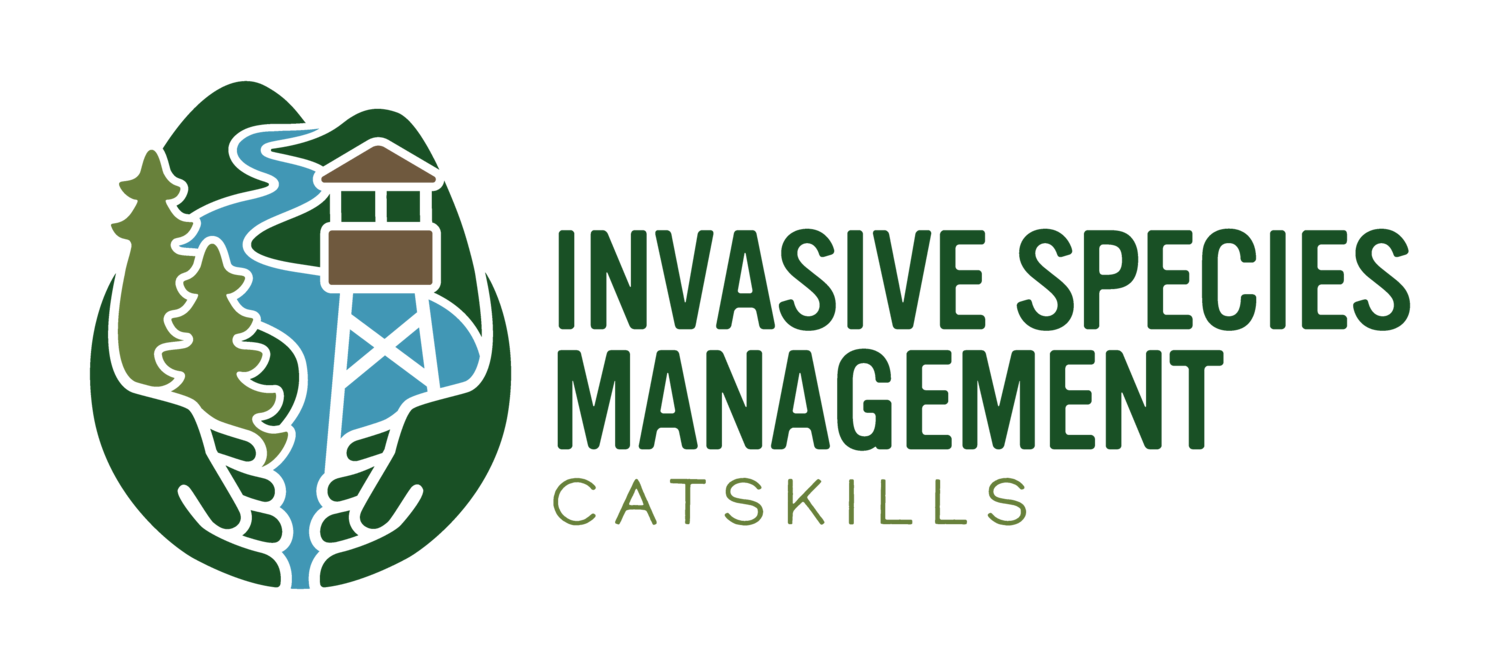Honeysuckle (Lonicera spp.)





Key Identification Features
Hollow stems
Fragrant, tubular flowers
Ranging from creamy white to various shades of pink to crimson
Description
L. morrowii, L. tatarica, and L. maackii are fairly similar in appearance, perennial shrubs that grow between 6-15ft, while L. japonica is a woody vine that can reach 30ft. These species all have egg-shaped leaves arranged opposite on hollow stems. Invasive honeysuckles begin flowering from May to June, producing tubular, fragrant flowers ranging from creamy white to crimson and several shades in between depending on the species. L. morrowii and L. tatarica produce small red berries from mid-summer through early-fall. L. maackii produces dark-red berries that don’t ripen until late fall while L. japonica produces dark-purple or black berries in the fall.
There are several species of invasive and native honeysuckle found in NY. The key to telling invasive Lonicera spp. from native species lies in the stem, as invasive honeysuckle species have hollow stems and native species have solid stems.
Native Range
All four invasive Lonicera species hail from Asia. L. japonica and L. maackii are native to China, Korea, and Japan and were originally brought in the 1800s over as horticultural specimens and for soil stabilization in landscaping, respectively. L. morrowii is native to Japan and was originally introduced to Long Island as an ornamental species in 1806. Lastly, L. tatarica is native to Central Asia and Southern Russia and was introduced to North America as an ornamental plant as early as the 1750s.
Habitat and Dispersion
All four species are generalists that thrive in a variety of open habitats (e.g. open fields, forest edges, disturbed areas, etc.). All four species do best in full sun, but L. japonica is fairly shade tolerant. These plants grow early in the season and can form dense stands that shade out native plants.
The berries these species produce are attractive food items for birds which aid in their dispersal. However, these berries are less nutritious than native berries and don’t provide the needed carbohydrates and calorie content that migrating birds need in the fall which can negatively impact their migration.
Best Management Practices
When treated early enough, small specimens can be pulled by hand. Larger, denser stands of honeysuckle may need to be treated with systemic herbicides. In open enough areas, prescribed burning is an effective method. Regardless of size, the best practice is removing plants before berry production (late summer, early fall) to limit the spread of its seeds.
Aquatic Plants
Floating Plants
Submerged
Aquatic Animals
Molluscs
Crustaceans
Terrestrial Plants
Trees
Shrubs
Terrestrial Animals
Forest Pests
Vertebrates
Insert Most Up to Date Map or Use Arc to Create CRISP Maps
